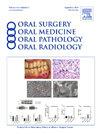Automatic feature segmentation in dental panoramic radiographs
IF 2
3区 医学
Q2 DENTISTRY, ORAL SURGERY & MEDICINE
Oral Surgery Oral Medicine Oral Pathology Oral Radiology
Pub Date : 2025-02-04
DOI:10.1016/j.oooo.2024.11.068
引用次数: 0
Abstract
Objective
The purpose of our study is to verify the diagnostic performance of an artificial intelligence (AI) system for the automatic detection of teeth, caries, implants, restorations, and fixed prosthesis on panoramic radiography.
Methodology
Panoramic radiographs were obtained from the EPIC and MiPacs systems of the University of Mississippi Medical Center, spanning from June 2022 to May 2023. A total of one thousand panoramic radiographs of adults were used to identify teeth, caries, implants, restorations, and fixed prostheses. The study included images from 580 patients. The identification and detection of teeth, caries, implants, restorations, and fixed prostheses were then independently determined by 2 oral and maxillofacial radiologists. The convolutional neural network−based architecture was analyzed for detecting panoramic findings. The artificial intelligence system (Velmeni Inc.) was used for analysis to determine whether the panoramic findings could be detected.
Results
The convolutional neural network system successfully detected teeth, caries, implants, restorations, and fixed prostheses on panoramic radiography. The AI system was able to detect findings in 567 out of a total of 580 panoramic radiographs, with a reliability of correctly detecting panoramic findings at 97.75%.
Conclusion
The detection of teeth and periapical pathosis performed by oral radiologists and by AI systems were comparable with each other. AI systems developed on the basis of on deep-learning methods can be useful for detecting teeth, caries, implants, restorations, and fixed prosthesis on panoramic images for clinical applications.
求助全文
约1分钟内获得全文
求助全文
来源期刊

Oral Surgery Oral Medicine Oral Pathology Oral Radiology
DENTISTRY, ORAL SURGERY & MEDICINE-
CiteScore
3.80
自引率
6.90%
发文量
1217
审稿时长
2-4 weeks
期刊介绍:
Oral Surgery, Oral Medicine, Oral Pathology and Oral Radiology is required reading for anyone in the fields of oral surgery, oral medicine, oral pathology, oral radiology or advanced general practice dentistry. It is the only major dental journal that provides a practical and complete overview of the medical and surgical techniques of dental practice in four areas. Topics covered include such current issues as dental implants, treatment of HIV-infected patients, and evaluation and treatment of TMJ disorders. The official publication for nine societies, the Journal is recommended for initial purchase in the Brandon Hill study, Selected List of Books and Journals for the Small Medical Library.
 求助内容:
求助内容: 应助结果提醒方式:
应助结果提醒方式:


